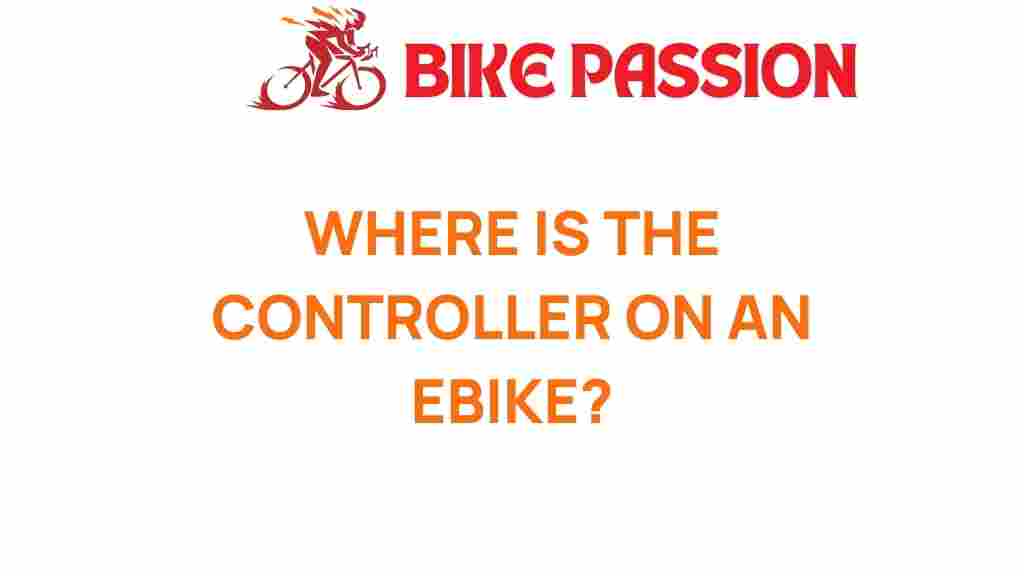eBike Controller: The Unsung Hero of Your Electric Bike
When it comes to electric bikes, or eBikes, many riders focus on the motor, battery, and frame, often overlooking a crucial component: the eBike controller. This hidden controller is the heart of your eBike, managing power distribution and ensuring optimal performance. In this article, we’ll delve into the essential role of the eBike controller, explore hidden components of cycling technology, provide maintenance tips, and enhance your bike’s performance.
What is an eBike Controller?
An eBike controller is a sophisticated electronic device that regulates the flow of electrical energy between the battery and the motor. It interprets signals from the rider, such as throttle input and pedal assist levels, and adjusts the motor’s output accordingly. Understanding how this component works can significantly improve your cycling experience.
Key Functions of an eBike Controller
- Power Management: The controller optimizes power usage, ensuring that the motor operates efficiently based on the rider’s input.
- Speed Regulation: It controls the speed of the bike, preventing it from exceeding preset limits.
- Safety Features: Many controllers include features like overcurrent protection and thermal cutoff to safeguard the system.
- Communication: Modern eBike controllers can communicate with displays and other components, providing real-time feedback on battery status and speed.
Understanding Hidden Components of Your eBike
Your eBike is a marvel of modern cycling technology, with several hidden components that work together seamlessly. Aside from the eBike controller, here are some other crucial parts:
1. Battery Management System (BMS)
The BMS is essential for maintaining the health of your battery. It monitors voltage, current, and temperature, ensuring that the battery operates within safe limits. A well-functioning BMS prolongs battery life and enhances performance.
2. Throttle and Pedal Assist Sensors
These sensors provide input to the eBike controller about how much power to supply to the motor. The throttle allows the rider to control speed directly, while pedal assist engages the motor based on the rider’s pedaling effort.
3. Display Unit
The display unit is the interface between the rider and the bike’s electronic systems. It shows important information like speed, distance traveled, battery level, and assists settings. A good display can make your ride more enjoyable and informative.
4. Motor
The motor is the powerhouse of your eBike, converting electrical energy into mechanical energy to propel you forward. It can be located in the hub of the wheel or in the bike’s frame, depending on the design.
Step-by-Step Guide to eBike Maintenance
Maintaining your eBike is essential for ensuring longevity and performance. Here are some maintenance tips focused on the eBike controller and other hidden components:
1. Regularly Check Connections
Ensure that all electrical connections are secure. Loose or corroded connections can lead to poor performance or even system failure. Inspect the wiring harness and connectors regularly.
2. Keep the Controller Clean
Dust and dirt can accumulate on the eBike controller, leading to overheating or malfunctions. Clean the controller with a damp cloth and ensure that it is not exposed to excessive moisture.
3. Monitor Battery Health
Check the battery’s voltage and charging cycles. A well-maintained battery will enhance the controller’s efficiency. Remember, lithium-ion batteries typically have a lifespan of 500-1000 charge cycles.
4. Upgrade Firmware
Some eBike controllers come with software that can be updated for improved performance or new features. Check with your manufacturer for available updates and instructions on how to apply them.
5. Consult the User Guide
Your eBike’s user guide is a valuable resource. It contains specific maintenance schedules and tips tailored to your model. Always refer to it for best practices.
Troubleshooting Common eBike Controller Issues
Like any technology, eBike controllers can encounter issues. Here are some common problems and how to troubleshoot them:
1. Loss of Power
If your eBike suddenly loses power, check the following:
- Ensure the battery is charged.
- Inspect the connections between the battery, controller, and motor.
- Reset the controller if it has a reset function.
2. Erratic Performance
Inconsistent power delivery can be frustrating. To troubleshoot:
- Check for loose wires or connections.
- Examine the throttle and pedal assist sensors for damage.
- Ensure the controller is not overheating.
3. Display Issues
If the display unit is malfunctioning, consider the following:
- Check if the display is properly connected to the controller.
- Look for software updates that may resolve bugs.
- Replace the display if it is physically damaged.
Enhancing Your eBike Performance
To get the most out of your eBike, consider these performance enhancement tips:
1. Optimize Tire Pressure
Proper tire pressure can significantly affect your bike’s performance. Check the recommended pressure on the tire sidewall and adjust accordingly.
2. Upgrade Components
Consider upgrading components like the battery, motor, or controller for improved efficiency and power. Ensure that any upgrades are compatible with your eBike’s system.
3. Regular Maintenance
Regularly maintaining your eBike, including the eBike controller, ensures that it runs smoothly and efficiently. Follow the maintenance tips mentioned earlier to keep your bike in top shape.
4. Use Quality Accessories
Invest in high-quality accessories that complement your eBike. From lights to locks, quality gear can enhance your riding experience and safety.
Conclusion
The eBike controller is the hidden controller that plays a pivotal role in the performance of your electric bike. By understanding its functions and maintaining your eBike properly, you can enhance your cycling experience significantly. Remember to regularly check your bike’s hidden components, follow maintenance tips, and troubleshoot any issues that arise. With the right care and knowledge, your eBike will provide you with countless enjoyable rides.
For more information on eBike technology and maintenance, check out this comprehensive guide. You can also visit eBike manufacturers for specific user guides and support.
This article is in the category Tech and created by BikePassion Team
